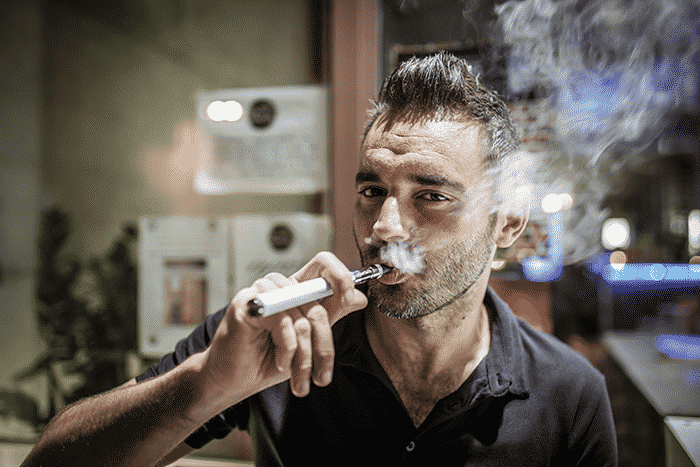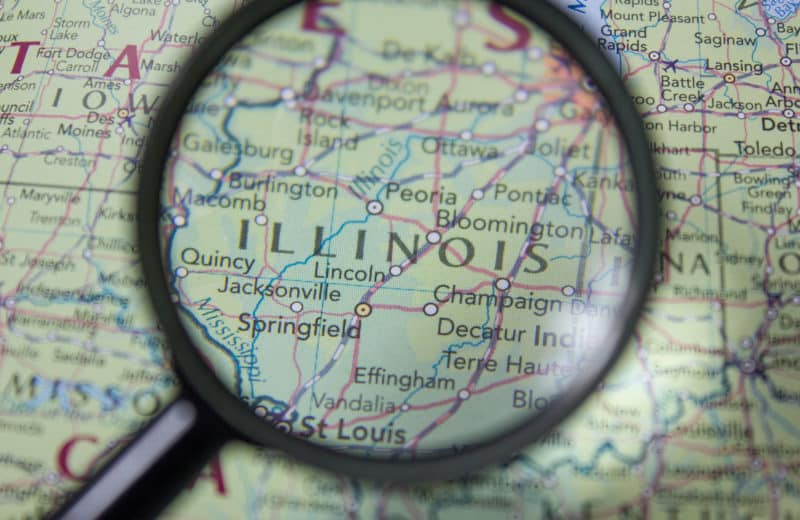By Morgan Lord
Electronic cigarettes have been marketed as the safer, cleaner way to smoke. However, without Food and Drug Administration (FDA) regulation and oversight, the long- and short-term health effects of these en vogue e-cigarettes remain unknown. In the sea of e-cigarette advocates and critics, there is one thing that everyone can agree on—e-cigarettes are big business, reeling in about $1.7 billion in 2013.
You’ve likely seen e-cigarettes or vapes around. Nicknamed after the vapor they emit, e-cigarettes are generally battery operated and use a heating element to warm up a refillable liquid cartridge that then releases a chemical-filled vapor. If you haven’t seen them, chances are you will soon enough—as sales are skyrocketing.
“For a while we were not seeing cigarettes everywhere; now we see e-cigarettes normalizing tobacco,” says Joel Africk, president and CEO of the Respiratory Health Association.
Due to lack of federal regulations, many of the ingredients in e-cigarette cartridges are unknown or poorly labeled. The e-cigarettes usually contain varying amounts of liquid nicotine and propylene glycol-based e-juice as well as other potentially toxic ingredients.
A 2014 study shows that the nicotine levels in e-cigarettes were substantially different from the nicotine listed on the package, according to the Centers for Disease Control and Prevention (CDC). And in 2009, the FDA found detectable levels of cancer-causing chemicals—including an ingredient used in antifreeze—in two leading e-cigarette brands and 18 different cartridges, according to the American Lung Association.
Besides not knowing for sure what’s inside e-cigarettes, we don’t know exactly what is coming out of them. Two studies have found formaldehyde, benzene and tobacco-specific carcinogens coming from the secondhand emissions, according to the American Lung Association.
“Inhaling anything directly is bound to cause damage to the respiratory tract,” says Carol Southard, RN, MSN, smoking cessation specialist. “And there’s also potential damage from the carcinogens and toxins in the secondhand vapor when an e-cigarette is exhaled.”
For now, the FDA is still weighing how it will regulate e-cigarettes in the United States. But instead of waiting for the feds to make up their minds, Chicago has taken action. Last April, Chicago was the first of the 20 largest U.S. cities to enact legislation that includes restrictions on e-cigarettes in its clean indoor air law.
The Chicago Clean Indoor Air Act forbids smoking or vaping in all enclosed public places, places of employment and 15 feet in front of these places. Smoking and vaping is also prohibited in nonenclosed public spaces, including Chicago’s public parks (all 595 of them) and stadiums, including Wrigley Field and U.S. Cellular Field, as well as within 15 feet of any entrance or exit to any Chicago public park or stadium.
Following Chicago’s lead, New York, Los Angeles and San Francisco added e-cigarettes to their smoke-free laws on the same day; Apr. 29, 2014. “Chicago was a national leader in this campaign, setting the effective date for other city ordinances to come out on the same date,” Africk says.
Recent regulations are aimed at preventing the next generation of nicotine addiction, Africk says.
Only 17.7 percent of Chicago adults reported smoking in 2013 versus 22.6 percent in 2011, the lowest rate among Chicago adults in the history of the survey. And only 10.7 percent of Chicago high school students reported smoking in 2013, down from 13.6 percent in 2011—a full five points below the national average, according to Chicago Department of Public Health Commissioner Bechara Choucair, MD.
“Chicago is enjoying its lowest rate of youth smoking. We don’t want to see the rate go up. E-cigarettes pose a seductive opportunity to become addicted to nicotine,” Africk says.
But stopping youth smoking may be difficult, as e-cigarettes come in thousands of kid-centric flavors, from cotton candy and vanilla cupcake to strawberry malt and cherry swirl.
To deter kids from seeking out flavored e-cigarettes, Chicago has also regulated that all flavored tobacco, including flavored e-cigarettes, cannot be sold within 500 feet of schools.
A closer look at the numbers reveals that more than a quarter of a million youths who had never smoked a cigarette used electronic cigarettes in 2013—a number that has tripled from 2011 to 2013, according to a CDC study published in the journal Nicotine and Tobacco Research. These figures could lead to lasting adverse effects including deficits in cognitive function and nicotine addiction. According to the CDC, about three out of every four teen smokers become adult smokers.
Some smokers and physicians are advocates of e-cigarettes because of harm reduction, saying that e-cigarettes are effective and safer than tobacco cigarettes. Other specialists, including Southard, are on the opposing side—against e-cigarettes and the American tobacco companies that are behind them.
E-cigarettes have tougher regulations and oversight in other countries, and are illegal in Australia, Brazil, Lebanon and Singapore. Yet the United States, as a whole, lags behind.
There are currently more than 250 brands of e-cigarettes on the market, but Big Tobacco is consolidating the field. Altria and Reynolds American together have captured about a quarter of convenience-store sales of e-cigarettes, according to the Wall Street Journal.
“With the American tobacco companies behind them, e-cigarettes will only become more addictive and more dangerous,” Southard says.
Ad dollars for marketing e-cigarettes are increasing. Youth exposure to these ads has increased, too. According to the New York Times, Blu cigs spent $12.4 million on ads in 2013, compared to $992,000 the year before.
As for the idea that e-cigarettes can help people with quitting smoking altogether, Southard is concerned that an e-cigarette is just another barrier. “These are not a cessation aid; instead, these get you through a situation where smoking is restricted—delaying a quit attempt all together,” she says. “The big issue is if people want help quitting, let’s help them, not give them another thing to be addicted to.”
The more nicotine in a cigarette, the more addictive and dangerous it becomes. E-cigarettes are available in varying nicotine levels. While a pack of Marlboro Red conventional cigarettes has 24 mg of nicotine, e-liquids come in several strengths, ranging from no nicotine to XXX High Density (48 mg of nicotine).
If you decide to quit, seek a program that will work with you toward that specific outcome. There’s help for you regardless of your income level, Southard says. You can also talk to your healthcare professional about one of the seven FDA-approved medications proven to be safe and effective in helping smokers quit—including Chantix, Zyban, nicotine patch, nicotine gum, nicotine inhaler, nicotine nasal spray and nicotine lozenge— according to the American Lung Association.
E-cigarettes are poised to keep growing. The risks of e-cigarettes—including how much nicotine and other potentially harmful chemicals are inhaled—have not fully been studied. One thing is sure: e-cigarettes will continue to be a smoking hot issue for a while to come.
Smoking Cessation Programs in Chicago
Quit Once: This smoking cessation program, founded by Carol Southard, RN, MSN, uses an evidence-based approach focusing on the physiological, psychological and behavioral. The program is one hour a week for eight weeks for individuals, groups or corporate sessions and does not turn anyone away.
quitoncechicago.com
Courage to Quit: For group or individual tobacco treatment, this program provides you with smoke-free information, skills and support.
lungchicago.org/courage-to-quit
The Illinois Tobacco Quitline: This is a free resource equipped with certified tobacco-treatment counselors (with translators for more than 200 languages) on call every day of the week from 7 a.m.–11 p.m.
quityes.org













